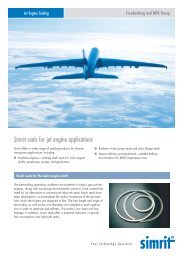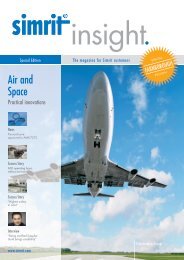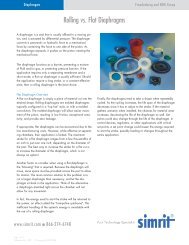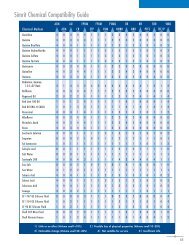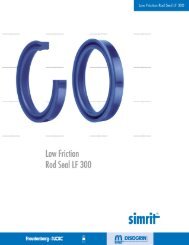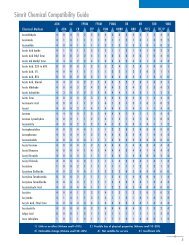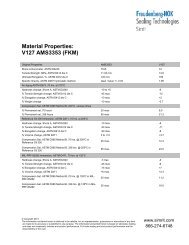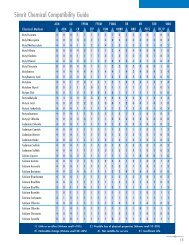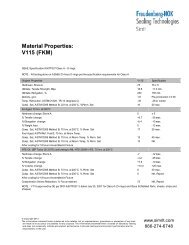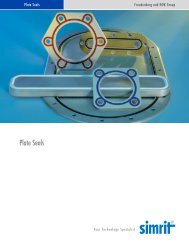Diaphragm Design Manual - Simrit
Diaphragm Design Manual - Simrit
Diaphragm Design Manual - Simrit
Create successful ePaper yourself
Turn your PDF publications into a flip-book with our unique Google optimized e-Paper software.
In this worst-case scenario, the total sidewall tension is made up of two components:1) The tension prompted by the pressure acting upon thepiston portion to the system.2) The tension generated by the pressure acting on theconvolution area. lbs. The forces are converted to the peripheral in for each area and added.Formula 8 – Calculating Sidewall Tension.25 P Total Tension(T) DCOS 2 2D2 D 1Lbs.ofBore Circumference1D 2Where: D 1 = the piston diameter in inches, D 2 = the bore diameter in inches, P = the pressure in PSI,and a = the angle of the sidewall from the verticalNote: Tan1 D2 D12h where h isthe height ofFormula 9 – The <strong>Diaphragm</strong>’s <strong>Design</strong>ed Burst Pressure Fabric Tensile x 2 Burst Pr essure ( <strong>Design</strong>) Convolution Widthinthe convolution at max strokeFor most applications the designed burst pressure should be at least 4 times the expected workingpressure of the application.Positive StopsTo ensure that the diaphragm never sees the kind of destructive tension noted in the previous section, apositive stop (see Figure 12) should be incorporated into the system. Positive stops are design toprevent the diaphragm material from acting as a brake for the piston’s movement and thereby helping toincrease the diaphragm’s cycle life.Stops can also be added to a portion of the assembly outside of the diaphragm chamber, such as on thepiston rod.© Copyright FNGP 200931



